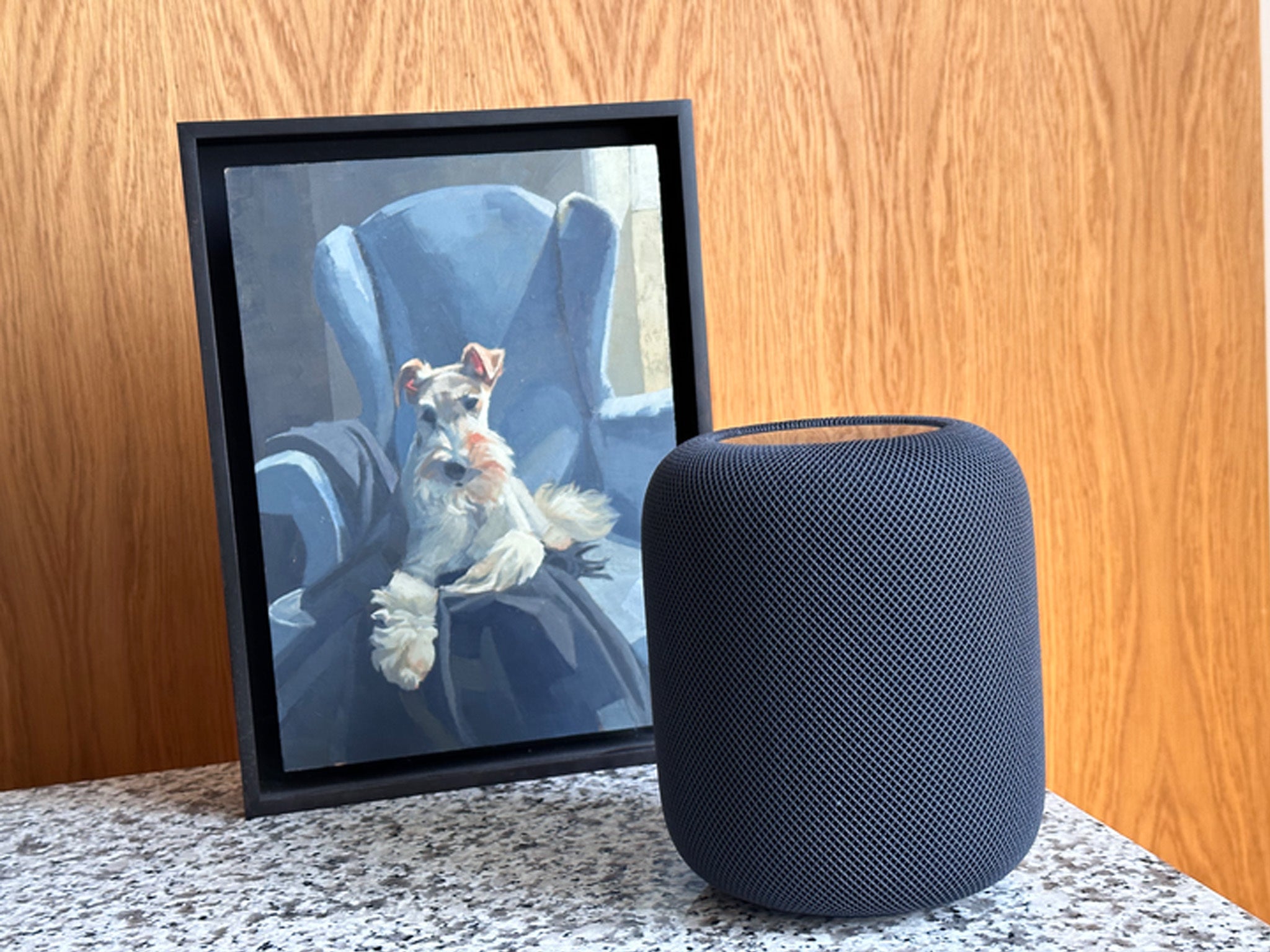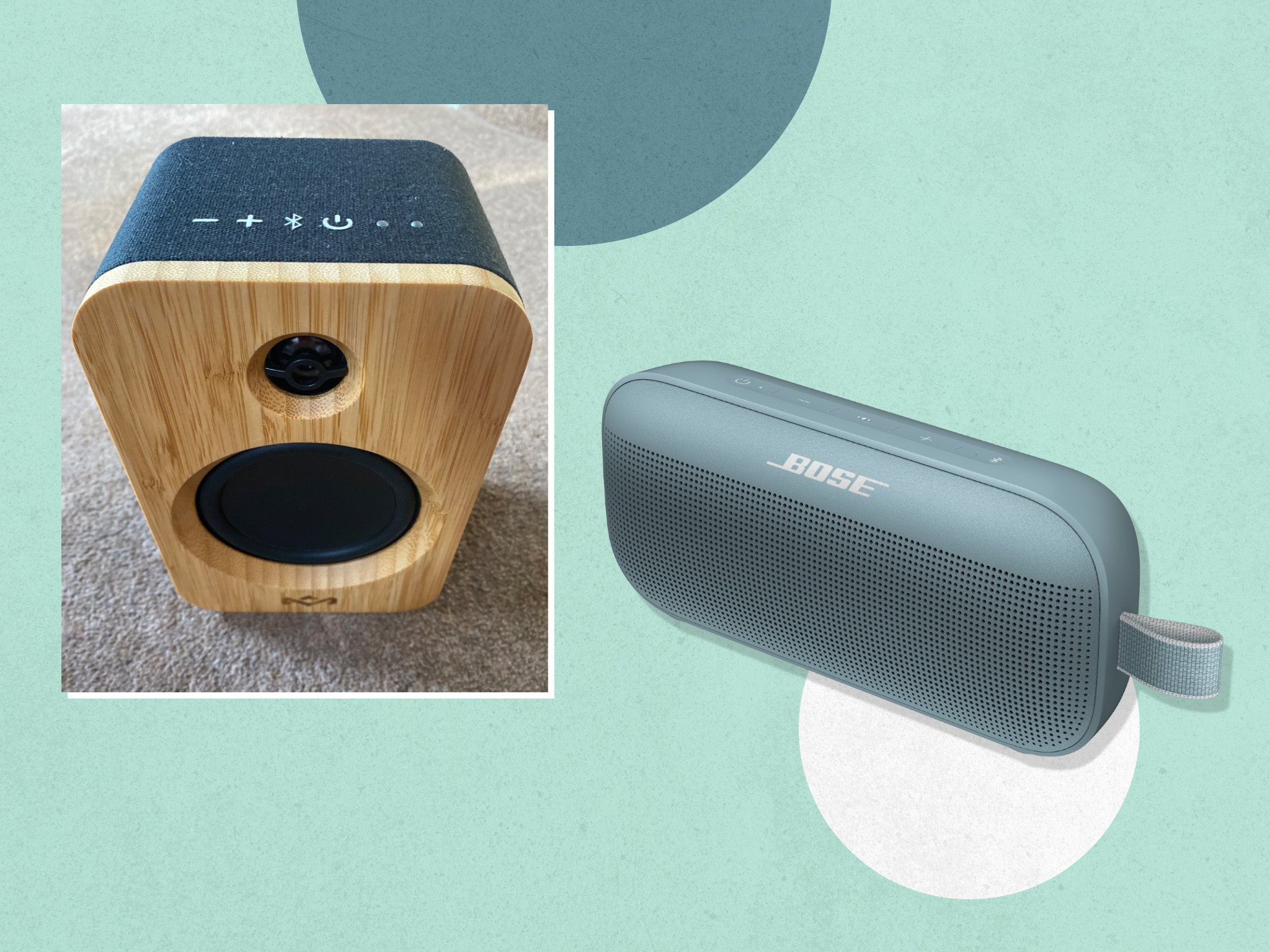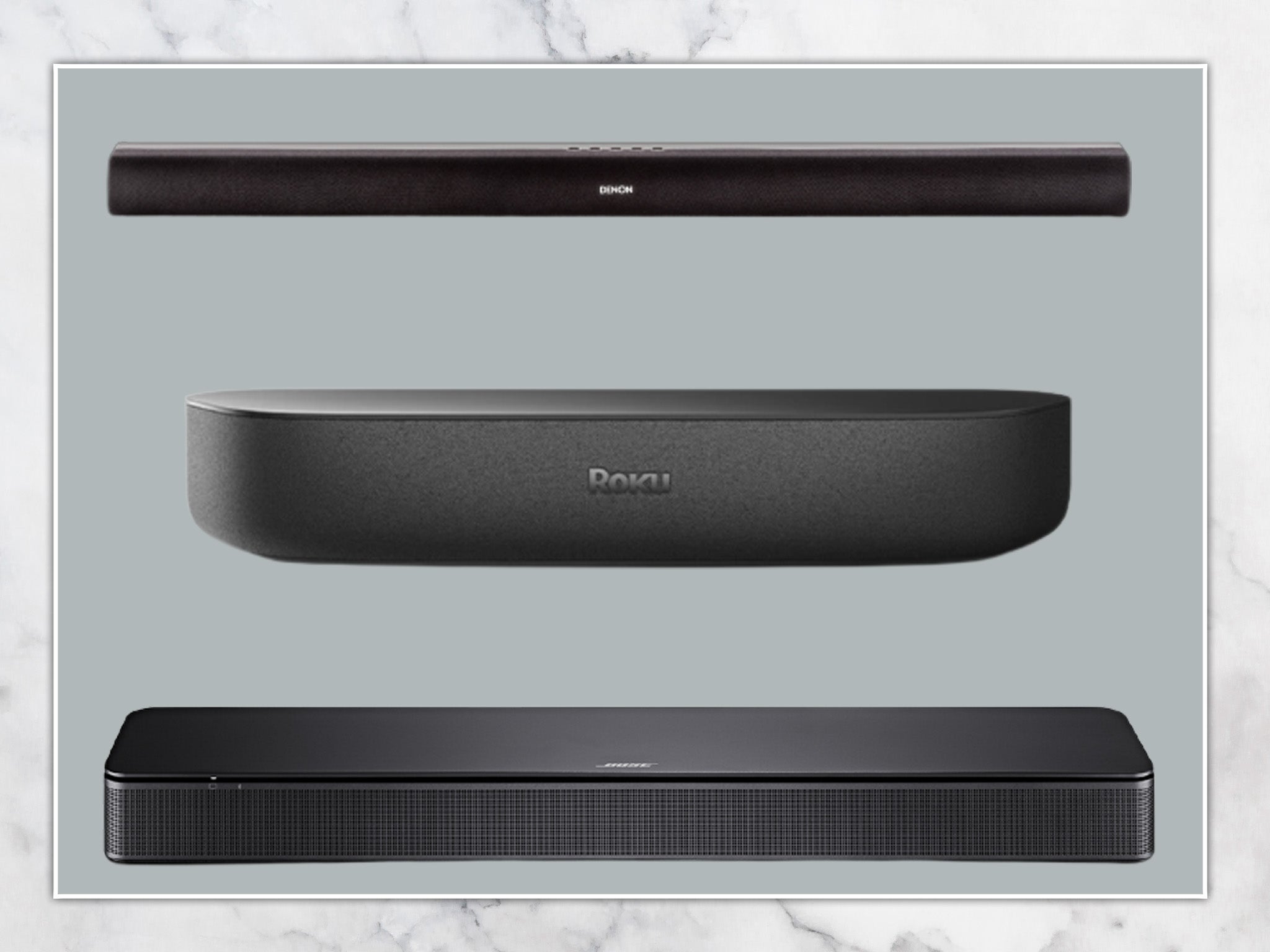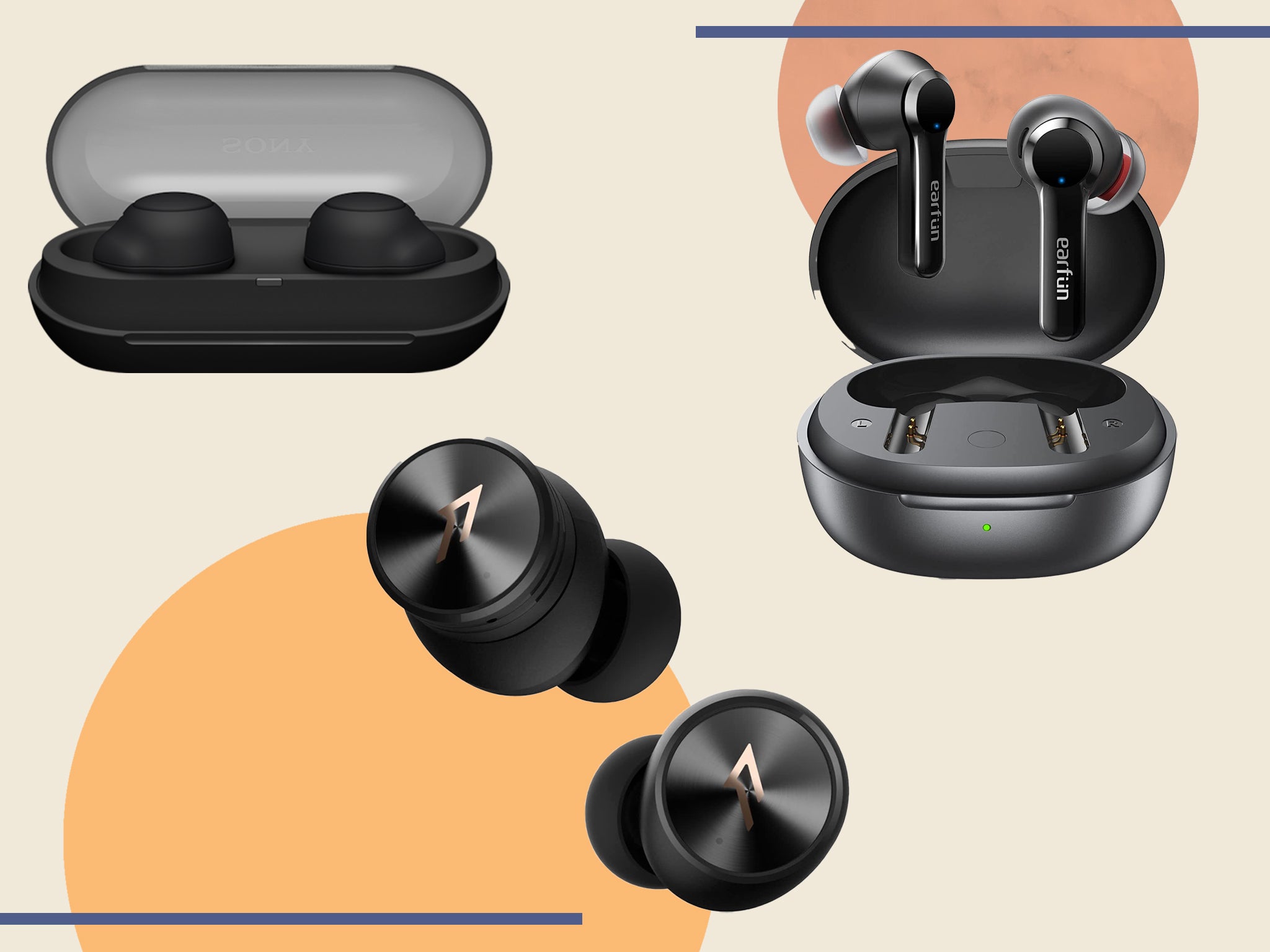Apple HomePod gen 2
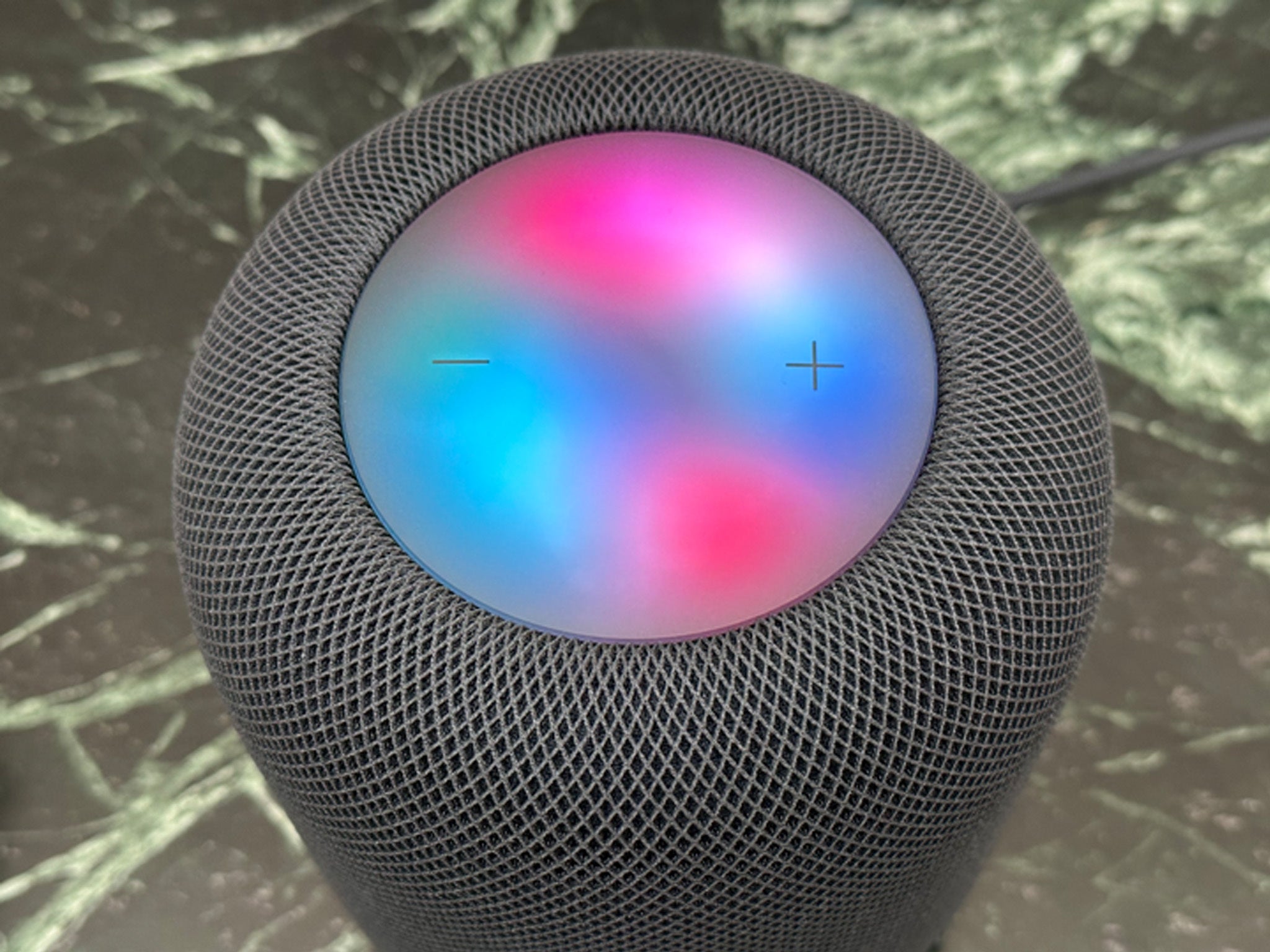
- Dimensions: 168mm tall, 142mm wide
- Weight: 2.3kg
- Colours: White, midnight
- Sensors: Accelerometer, temperature and humidity, sound recognition
- Connectivity: Wifi, Bluetooth, ultra wideband chip
- Speakers: 4in excursion woofer, five tweeters
Design
The new HomePod, at first glance, looks just the same as the old one, especially in the white finish. The other colour is midnight, replacing space grey, and there’s a touch more variation here, with a darker, slightly blue hint to the finish.
The size is almost identical: it’s 4mm shorter than the original, at 168mm, but the same width at 142mm. It’s also slightly lighter this time around, at 2.3kg, though the first model was hardly heavy.
Read more: Best bookshelf speakers that deliver on sound
The biggest change is at the top. The touch-sensitive display previously sat flush with the mesh design that covers most of the rest of the speaker but now it’s recessed a little, so the mesh stands proud. This helps with reducing accidental presses of the display (which, on the previous model, caused the speaker to leap into life in a way that could be startling when unexpected). The display is also edge-to-edge of the glass now, instead of focused on the centre.
The overall design is pleasing: a solid but tactile tumbler of a speaker, which looks good in a variety of home environments.
Audio quality
Apple says the overwhelming use of a smart speaker is to play music, and it makes audio quality the priority on its HomePod devices. Internal design changes mean there are fewer tweeters than before, though the company claims the audio is improved over the original.
The HomePod is designed to sound its best straight out of the box, without tweaks or adjustments, wherever you put it. When you first turn it on, as it plays music, it uses four microphones to work out if it’s next to a wall, in a corner, and so on, and adjusts the output of the multiple internal speakers to optimise what you hear. It also recalibrates the audio every time it’s moved or turned off.
Read more: All the rumours about Apple’s anticipated Reality Pro AR/VR headset
Vocal tracks are present and effective, with a great sense of subtle accuracy and strong clarity. There’s plenty of bass, and a dedicated internal microphone monitors this in real time, to ensure it’s not too much. The level of detail is such that, for instance, listening to Billy Joel’s ‘Scenes from an Italian Restaurant’, there are parts I’ve never heard before. Take a song like Taylor Swift’s ‘Anti-Hero’, which is available in Dolby Atmos, and the Spatial Audio capability (not on the first HomePod), sees the song take flight.
Compared to, say, the Sonos One, the audio is better on the HomePod, though that’s because the Sonos is a mono speaker. Buy two of those, which would cost £378, and you have a music setup that beats a HomePod.
However, you can also wirelessly connect two HomePods as a stereo pair and the effect then is spectacular, with a fully all-encompassing effect – although the total price then runs to £598. Note that you can only pair two similar HomePods – that is, the first-gen HomePod doesn’t pair with the new one.
Read more: Best soundbars for cinematic audio from your TV
Apple’s Siri is the voice assistant you mostly use to work the HomePod, so you can say, “Hey, Siri, play that song that goes ‘I’ve got that sunshine in my pocket’”, and it’ll respond by playing Justin Timberlake’s ‘Can’t Stop the Feeling’. You can also ask it to adjust the volume, rewind a track and so on.
Additionally, you can ask it to set multiple timers, ask it for the latest currency rates or the time in Seattle (and other places), play a news summary or any of thousands of radio stations, though not the BBC. That doesn’t mean you can’t hear Radio 4 but, annoyingly, you have to use a workaround: launch BBC Sounds on your iPhone and then tap the phone against the HomePod to hand off the audio to it. Playing music from an Android phone, by the way, also needs a third-party app, while any iPhone can follow the tap-to-hand-off procedure.
Read more: Best record players for spinning your favourite vinyl
There are other features such as intercom, which means you can send a message to say lunch is ready to all the HomePods in your home, for instance. And since the new HomePod has a temperature and humidity sensor, it can interact with compatible devices to close your smart blinds when the temperature reaches a certain level, for instance. In the coming months, it will also be able to listen out for the sounds that smoke alarms make, for instance, and send your iPhone a notification if it hears it. This feature is not included on the HomePod mini.
Siri has got cleverer since the first HomePod appeared, and now knows sport fixtures and latest results, among other things. But there are still lots of times when asking a question directs you to your iPhone for web results.
Still, improving Siri’s smarts is something that can be done on Apple’s servers and, as long as the processor built into the speaker can handle it, can be upgraded at any time. The new speaker uses the S7 chip first seen in the Apple Watch series 7, which is pretty powerful for a speaker.

